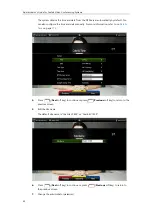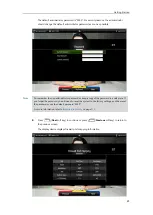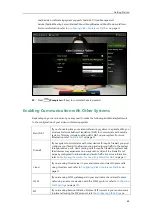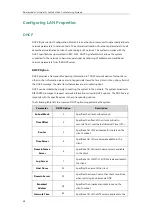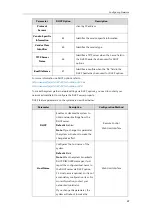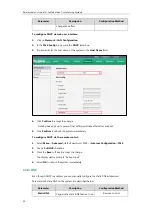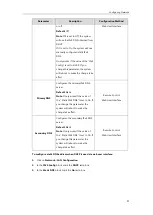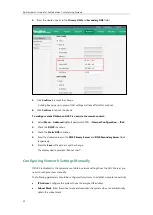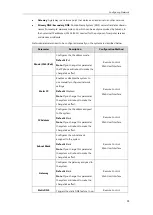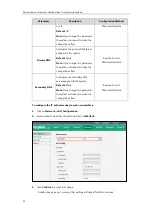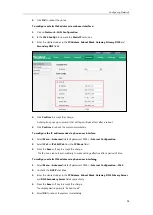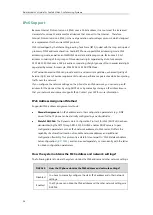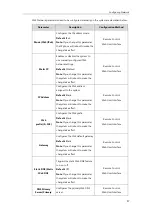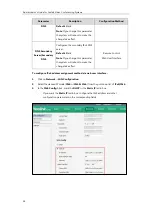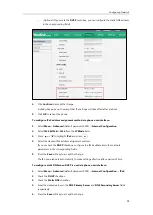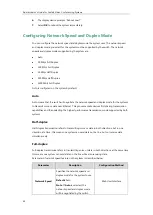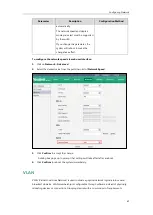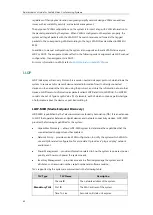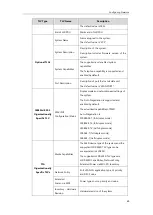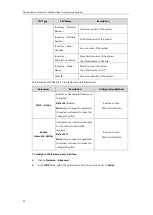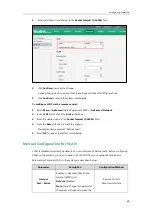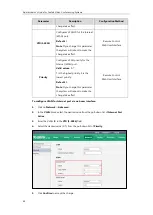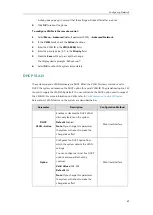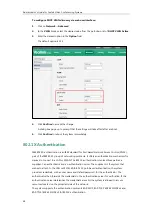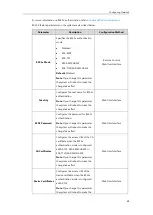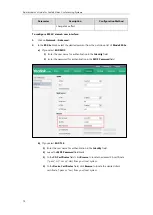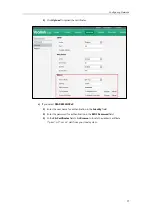
Administrator’s Guide for Yealink Video Conferencing Systems
56
IPv6 Support
Because Internet Protocol version 4 (IPv4) uses a 32-bit address, it cannot meet the increased
demands for unique IP addresses for all devices that connect to the Internet. Therefore,
Internet Protocol version 6 (IPv6) is the next generation network layer protocol, which designed
as a replacement for the current IPv4 protocol.
IPv6 is developed by the Internet Engineering Task Force (IETF) to deal with the long-anticipated
problem of IPv4 address exhaustion. Yealink IP Phone supports IPv4 addressing mode, IPv6
addressing mode, as well as an IPv4&IPv6 dual stack addressing mode. IPv4 uses a 32-bit
address, consisting of four groups of three decimal digits separated by dots; for example,
192.168.1.100. IPv6 uses a 128-bit address, consisting of eight groups of four hexadecimal digits
separated by colons; for example, 2026:1234:1:1:215:65ff:fe1f:caa.
VoIP network based on IPv6 can provide end-to-end security capabilities, enhanced Quality of
Service (QoS), a set of service requirements to deliver performance guarantee while transporting
traffic over the network.
If you configure the network settings on the phone for an IPv6 network, you can set up an IP
address for the phone either by using DHCPv6 or by manually entering an IP address. Ensure
that your network environment supports IPv6. Contact your ISP for more information.
IPv6 Address Assignment Method
Supported IPv6 address assignment methods:
Manual Assignment:
An IPv6 address and other configuration parameters (e.g., DNS
server) for the IP phone can be statically configured by an administrator.
Stateful
DHCPv6:
The Dynamic Host Configuration Protocol for IPv6 (DHCPv6) has been
standardized by the IETF through RFC 3315. DHCPv6 enables DHCP servers to pass
configuration parameters such as IPv6 network addresses to IPv6 nodes. It offers the
capability of automatic allocation of reusable network addresses and additional
configuration flexibility. This protocol is a stateful counterpart to “IPv6 Stateless Address
Autoconfiguration” (
), and can be used separately or concurrently with the latter
to obtain configuration parameters.
How the system obtains the IPv6 address and network settings?
The following table lists where the system obtains the IPv6 address and other network settings:
DHCPv6
How the IP phone obtains the IPv6 address and network settings?
Disabled
You have to manually configure the static IPv6 address and other network
settings.
Enabled
The IP phone can obtain the IPv6 address and the other network settings via
DHCPv6.
Summary of Contents for VC120
Page 1: ......
Page 4: ...Administrator s Guide for Yealink Video Conferencing Systems ...
Page 16: ...Administrator s Guide for Yealink Video Conferencing Systems xvi ...
Page 48: ...Administrator s Guide for Yealink Video Conferencing Systems 32 ...
Page 114: ...Administrator s Guide for Yealink Video Conferencing Systems 98 ...
Page 180: ...Administrator s Guide for Yealink Video Conferencing Systems 164 ...
Page 242: ...Administrator s Guide for Yealink Video Conferencing Systems 226 ...
Page 284: ...Administrator s Guide for Yealink Video Conferencing Systems 268 ...
Page 292: ...Administrator s Guide for Yealink Video Conferencing Systems 276 ...
Page 310: ...Administrator s Guide for Yealink Video Conferencing Systems 294 ...
Page 316: ...Administrator s Guide for Yealink Video Conferencing Systems 300 ...

